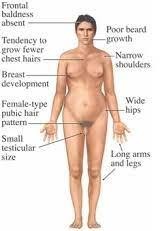Which diagnostic test does the nurse expect the primary care provider to prescribe to confirm a diagnosis of osteoporosis?
A diagnostic test that will detect muscle dysfunction.
A diagnostic test that determine the mineral density of the bone.
A diagnostic test that generates detailed images of body structures, including the bones, tissues, organs, and nerves
A diagnostic test that generates rapid, clear two-dimensional images of the bones, organs, and tissues
The Correct Answer is B
Choice A rationale: This test is not specific for confirming osteoporosis.
Choice B rationale: This test is called a bone mineral density (BMD) test or a dual-energy X-ray absorptiometry (DXA) scan. It measures how much calcium and other minerals are in a segment of bone.
Choice C rationale: This test is not specific for confirming osteoporosis.
Choice D rationale: This test is not specific for confirming osteoporosis.

Nursing Test Bank
Naxlex Comprehensive Predictor Exams
Related Questions
Correct Answer is A
Explanation
Choice A rationale: Cri du chat syndrome involves a high-pitched cry in infants and other distinct physical and developmental features, but it doesn't present with the described symptoms.
Choice B rationale: Klinefelter syndrome, characterized by an extra X chromosome (XXY) in males, typically presents with small testicles, gynecomastia (enlarged breast tissues), sexual dysfunction, and altered body proportions, such as long legs and a shorter trunk, aligning with the client's symptoms.
Choice C rationale: Patau syndrome (Trisomy 13) manifests with severe developmental issues, facial abnormalities, and other physical malformations, but the described symptoms are not typically associated with this syndrome.
Choice D rationale: Turner syndrome involves females with a missing or partially missing X chromosome (45, X), resulting in specific physical features and medical problems not consistent with the described symptoms in a male client.

Correct Answer is A
Explanation
Choice A rationale: This is the correct answer. It corresponds to 300 mg of the drug ((300x 5)/250).
Choice B rationale: This is incorrect because it is too low. It is the amount of milliliters that corresponds to 200 mg of amoxicillin trihydrate, which is less than the prescribed dose of 300 mg.
Choice C rationale: This is incorrect because it is too low. It is the amount of milliliters that corresponds to 60 mg of amoxicillin trihydrate, which is not enough to treat an oral infection.
Choice D rationale: This is incorrect because it is too low. It is the amount of milliliters that corresponds to 250 mg of amoxicillin trihydrate, which is less than the prescribed dose of 300 mg.
 |
Whether you are a student looking to ace your exams or a practicing nurse seeking to enhance your expertise , our nursing education contents will empower you with the confidence and competence to make a difference in the lives of patients and become a respected leader in the healthcare field.
Visit Naxlex, invest in your future and unlock endless possibilities with our unparalleled nursing education contents today
Report Wrong Answer on the Current Question
Do you disagree with the answer? If yes, what is your expected answer? Explain.
Kindly be descriptive with the issue you are facing.
